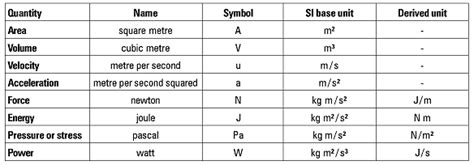Whats The Si Unit For Weight
News Co
Apr 07, 2025 · 5 min read

Table of Contents
What's the SI Unit for Weight? Understanding Mass vs. Weight
The question "What's the SI unit for weight?" is deceptively simple. While many people use the terms "weight" and "mass" interchangeably in everyday conversation, they are distinct physical quantities, and therefore have different SI units. Understanding this distinction is crucial for accurate scientific communication and calculations. This article will delve deep into the difference between mass and weight, exploring the SI unit for weight and addressing common misconceptions.
Mass: The Amount of Matter
Mass is a fundamental property of an object, representing the amount of matter it contains. It's a scalar quantity, meaning it only has magnitude and no direction. The SI unit for mass is the kilogram (kg). A kilogram is defined by the Planck constant, a fundamental constant in quantum mechanics. This means that the kilogram is fundamentally tied to the very nature of the universe, making it a robust and unchanging standard.
-
Measuring Mass: Mass is typically measured using a balance scale, comparing the unknown mass to a known mass. This method is independent of gravity. Other methods include inertial mass measurements, which relate mass to acceleration under a known force.
-
Invariance of Mass: Crucially, an object's mass remains constant regardless of its location. Whether you're on Earth, the Moon, or in outer space, the amount of matter in the object remains the same. This is a key difference from weight.
Weight: The Force of Gravity
Weight, on the other hand, is a measure of the force of gravity acting on an object's mass. It's a vector quantity, possessing both magnitude and direction – it always acts downwards towards the center of the Earth (or whatever celestial body exerts the dominant gravitational force).
The SI unit for weight, being a force, is the newton (N). One newton is defined as the force required to accelerate a one-kilogram mass at a rate of one meter per second squared (1 N = 1 kg·m/s²).
-
Weight and Gravity: The weight of an object is directly proportional to its mass and the acceleration due to gravity (g). The formula is: Weight (W) = Mass (m) x Acceleration due to gravity (g). The value of 'g' varies depending on location; it's approximately 9.81 m/s² on Earth's surface but significantly less on the Moon.
-
Weight Changes with Location: This is why your weight would be different on the Moon. Your mass remains the same, but the weaker lunar gravity reduces the force acting on your mass, resulting in a lower weight.
Common Misconceptions and Everyday Usage
The widespread confusion between mass and weight stems from everyday usage. We frequently use scales that display "weight" in kilograms, even though they're actually measuring mass (indirectly, through the force of gravity). These scales are properly called mass scales, not weight scales. This practice is convenient for everyday purposes, but it’s scientifically inaccurate. The readings are only approximate and depend on the local gravitational field strength.
Consider the following scenarios to further illustrate the difference:
-
Shopping for groceries: You buy "1 kilogram of apples." You're actually buying a certain amount of matter (mass), even though the scale displays kilograms.
-
Weighing yourself: A bathroom scale typically displays your weight in kilograms or pounds. However, this is a simplified representation of your mass derived from the gravitational force acting on it. A more precise term would be "apparent mass," as it’s dependent on 'g'.
-
Space travel: In the weightless environment of space, astronauts have the same mass as on Earth, but their weight is essentially zero because there's negligible gravitational force acting on them.
The Importance of Precision in Scientific Contexts
The distinction between mass and weight becomes critically important in scientific research, engineering, and any field requiring precise measurements. Confusing these terms can lead to significant errors in calculations, especially when dealing with different gravitational environments.
For instance, in designing spacecraft, accurately calculating the mass of the components is paramount for determining propulsion requirements and trajectory. Using "weight" measurements from Earth, without accounting for changes in gravity, would lead to inaccurate calculations and possibly disastrous consequences.
Similarly, in physics experiments, precise measurement of mass is essential to derive accurate results in experiments involving forces, momentum, and energy. Assuming weight and mass are interchangeable would lead to erroneous conclusions.
Other Units Related to Weight
While the newton (N) is the SI unit for weight (force), other units are also used, often in specific contexts:
-
Kilogram-force (kgf): This unit represents the weight of a 1 kg mass under standard Earth gravity (approximately 9.81 m/s²). It’s not an SI unit but still frequently encountered.
-
Pound-force (lbf): This is a unit of force in the imperial system, roughly equivalent to the weight of a one-pound mass under standard Earth gravity.
-
Dyne: A smaller unit of force in the CGS system (centimeter-gram-second), 1 dyne = 10⁻⁵ N.
Conclusion: Mass, Weight, and the Importance of Clarity
In summary, the SI unit for weight is the newton (N), a unit of force. The SI unit for mass is the kilogram (kg), a unit of the amount of matter. While everyday usage often blurs the lines, understanding the fundamental difference between mass and weight is vital for clear scientific communication and accurate calculations, particularly when dealing with situations outside of standard Earth gravity. Failing to distinguish between these two crucial concepts can lead to significant errors and misconceptions in various fields. Always strive for precision and clarity when dealing with these fundamental physical quantities. Using the correct terminology ensures accurate comprehension and avoids potential misunderstandings.
Latest Posts
Related Post
Thank you for visiting our website which covers about Whats The Si Unit For Weight . We hope the information provided has been useful to you. Feel free to contact us if you have any questions or need further assistance. See you next time and don't miss to bookmark.